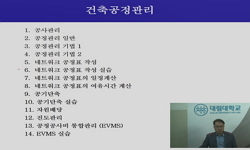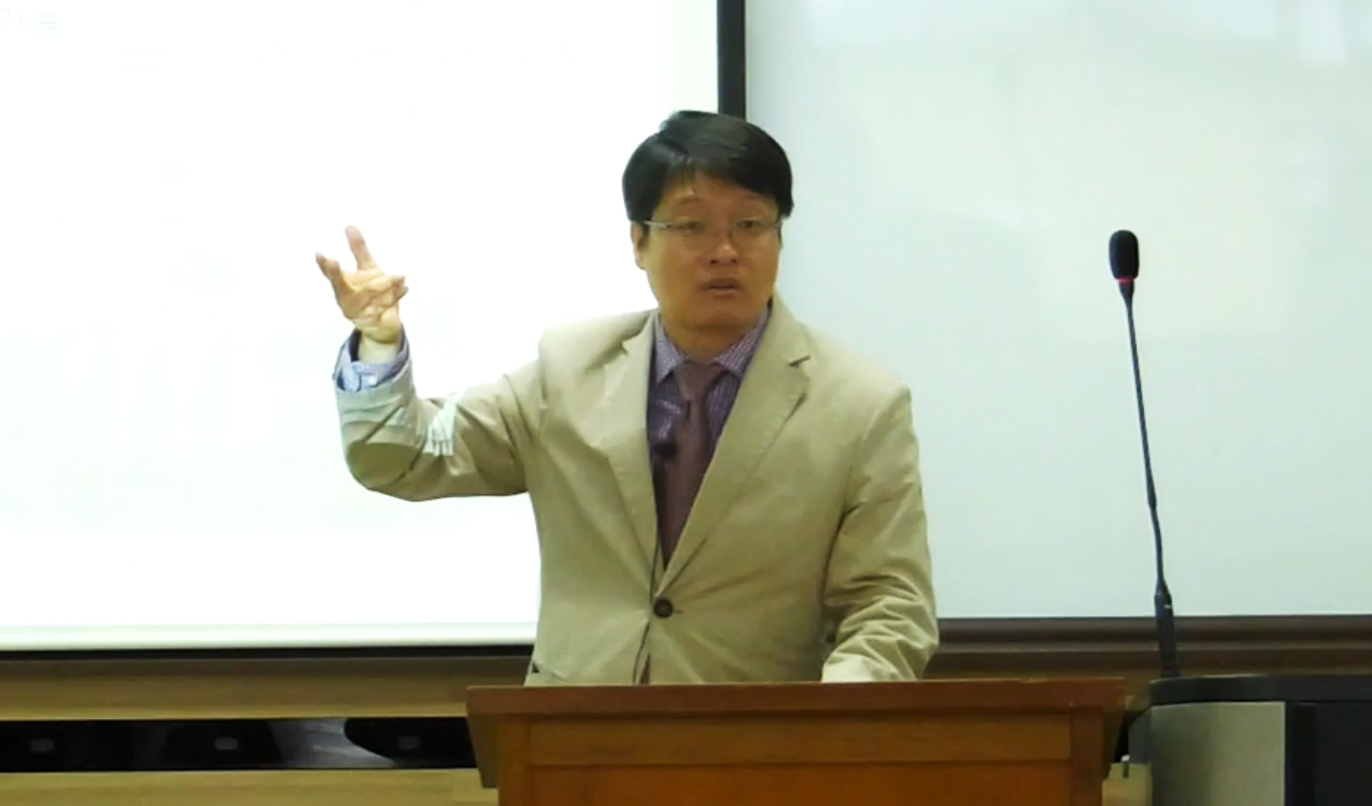조선시대 왕릉은 왕(후)이 안장된 곳이다. 왕릉에는 능 상설 공간과 제향 공간, 그리고 진입 공간으로 구성되어 있다. 이 중에서 정자각은 의례를 담당하기 위해 설치된 건축물이다. 그러나 ...
http://chineseinput.net/에서 pinyin(병음)방식으로 중국어를 변환할 수 있습니다.
변환된 중국어를 복사하여 사용하시면 됩니다.
- 中文 을 입력하시려면 zhongwen을 입력하시고 space를누르시면됩니다.
- 北京 을 입력하시려면 beijing을 입력하시고 space를 누르시면 됩니다.
정자각의 건축 조영과 시대적 변화 고찰 = Insight into the Architectural Construction of the T-shaped Shrine and its Periodical Changes
한글로보기https://www.riss.kr/link?id=T14469003
- 저자
-
발행사항
서울 : 서경대학교 경영문화대학원, 2017
-
학위논문사항
학위논문(석사)-- 서경대학교 경영문화대학원 : 동양학과 2017. 2
-
발행연도
2017
-
작성언어
한국어
- 주제어
-
발행국(도시)
서울
-
형태사항
ⅳ,104 ; 26 cm
-
일반주기명
지도교수: 류희성
- 소장기관
-
0
상세조회 -
0
다운로드
부가정보
국문 초록 (Abstract)
조선시대 왕릉은 왕(후)이 안장된 곳이다. 왕릉에는 능 상설 공간과 제향 공간, 그리고 진입 공간으로 구성되어 있다. 이 중에서 정자각은 의례를 담당하기 위해 설치된 건축물이다. 그러나 지금까지의 정자각에 관한 연구는 건축학이나 고고학의 방향에서 주로 이루어졌다. 물론, 건축학과 고고학적 연구는 정전(正殿)과 배위청(拜位廳) 간의 연결문제 및 능을 천장(遷葬)하는 경우가 있었기 때문에 반드시 필요한 연구이지만, 정자각 본래의 제의적인 역할을 소홀히 한다는 아쉬운 점이 있었다. 이런 까닭에, 필자는 정자각의 건축영조와 시대적 변화, 정자각의 제전의식에 대한 포괄적인 고찰을 논문의 목적으로 삼았다. 이러한 연구는 크게 두 부분으로 수행되었다. 정자각 영조 과정을 탐구한 건축물 부분은 『현륭원원소도감의궤(顯隆園園所都監儀軌)』에서 구체적인 사례를 취했다. 정자각의 의례 부분은 조선초기의 『국조오례의』와 조선 후기의 『국조상례보편』 및 『홍릉산릉도감의궤』 등을 서로 비교하여 역사적 변천과정을 따라가며 살폈다.
이 논문의 구체적 내용은 다음과 같다. 첫째, 정자각의 역사적 배경에 대해 살펴보았다. 정자각은 정제된 명칭이라고 보기 어려우며, ‘정자(丁字)’ 형태를 지닌 ‘각(閣)’이라는 것을 의미하는 것이다. 하지만 그 명칭에는 ‘침전(寢殿)’이라는 격식이 높은 ‘전(殿)’의 의미가 내포되어 있는데, 당연히 ‘전(殿)’ 아래 ‘각(閣)’이라는 것이 있어야 한다. 더욱이 여기에 배위청(拜位廳)의 ‘청(廳)’의 개념까지도 뒤섞여 포함되었다. 이와 같이 정자각의 명칭은 건축물 형태로 인하여 붙여진 용어이지만, 왕릉의 건축물로서 정자각의 위상 및 의미가 무엇인지는 분명하게 드러나지 않는다. 따라서 정자각의 배경과 명칭 등을 역사적으로 고찰하여 분명하게 드러냈다.
둘째, 정자각의 건축물 영조와 그 변천에 관해서 탐구하였다. 이것은 건축학적 입장으로서 건축 자재의 투입과정을 중심으로 살펴보았다. 지금까지 진행된 건축학적 측면의 연구들은 ‘丁’자 형태의 각(閣) 가운데 ‘一’자 형태의 정전과 ‘亅’자 형태의 배위청의 연결 방식과 칸수(間數)의 문제가 주종을 이루고 있었다. 그러므로 나는 정자각의 칸수의 변천을 다루면서 동시에 어떠한 자료가 건축물 영조 과정에 들어갔는지를 중점적으로 살펴보았다.
셋째, 정자각의 제전의례에 관해서 살펴보았다. 지금까지 이루어진 정자각 연구는 제의(祭儀)적인 역할을 소홀히 한 채 건축 양식만을 중점적으로 다루어왔다. 이는 분명하게 본말이 전도되었다고 할 수 있다. 이런 점에서, 정자각의 제전의례에서 이루어지는 제례의 전반적인 의식과 임시 정자각에서 시행되던 3년간 흉례향사(凶禮香祀), 그리고 그 이후의 정식 정자각에서의 길례를 살펴보았다.
결론적으로, 이러한 건축학적⦁고고학적 연구를 포함하는 정자각에 대한 제전의례(祭奠儀禮)의 연구는 왕릉의 주요한 건축물인 정자각의 의미와 위상, 그리고 건축물로서의 역사적인 변천과정, 특히 제전의식(祭奠儀式)을 거행하는 장소로서의 정자각의 존재의미를 밝혔다. 더욱이 이 연구를 통하여 세계유네스코 문화유산인 조선 왕릉을 보존하는 데 있어서, 능과 부속건축물의 보존뿐만 아니라, 그 정신적 내용이라 할 수 있는 의례를 보존하는 것도 중요하다는 점을 알 수 있었다.
다국어 초록 (Multilingual Abstract)
The Royal Tombs of the Joseon Dynasty were where the Kings (Queens) were buried. The Royal Tombs consist of the Burial Area, the Ritual Area, and Entrance Area. Among them, the T-shaped shrine is a structure built to hold sacrificial rituals. However,...
The Royal Tombs of the Joseon Dynasty were where the Kings (Queens) were buried. The Royal Tombs consist of the Burial Area, the Ritual Area, and Entrance Area. Among them, the T-shaped shrine is a structure built to hold sacrificial rituals. However, until now studies on the T-shaped shrine have mainly been conducted from architectural or archeological perspectives. Certainly, architectural and archaeological research is a necessary study because there is the issue of connecting the Main Hall and the Hall of Worship, as well as moving the burial sites. Nonetheless, such research has been rather insufficient in that they failed to take into account the fundamental role of the shrine, that is, conducting the rituals. Against this backdrop, the purpose of my paper is a comprehensive study on the architectural regime and the historical change of the T-shaped shrine, and on the spiritual rituals in the shine. This study was largely performed in two parts. For the architectural aspect, which explored the T-shaped shrine’s construction process, I used the concrete examples from the "Hyeonryungwon Illustrated Archives on Moving the Burial Site(『顯隆園園所都監儀軌』)". As for the ritual aspect of the T-shaped shrine, I followed the historical change process by comparing the “Five National Rituals(『國朝五禮儀』)" of early Joseon, the "Annex to National Mourning Rituals(『國朝喪禮補編』)" and the “Illustrated Archives of Hongleng Sanleng(『弘陵山陵都監儀軌』)” of latter Joseon.
The specific contents of this paper are as follows.
First, I looked at the historical background of the T-shaped shrine. The term “T-shaped shrine” cannot be seen as a refined name, for it simply signifies a ‘shrine(『閣』)’ that has a ‘T-shape(『丁字』).’ However, the name implies a ‘sleeping chamber(『寢殿』),’ a type of a formal chamber(『殿』), and this naturally includes a ‘room(『閣』)’ below the ‘chamber.’ In addition, the term also involves the concept of a ‘hall(『廳』)’ as in the Worship Hall(『拜位廳』). As such, the term ‘T-shaped shrine’ is a term given according to the structural form but it is not clear what its status and significance is as part of the Royal Tombs. Therefore, I deliberated on the historical aspects of the background and the term of the shrine and clarified them.
Second, I researched the architectural construction of the T-shaped shrine and its transition. This was done from an architectural standpoint, focusing on the input process of the building materials. Studies on the architectural aspects that have been carried out so far have mainly focused on the connection method of the shape ‘T,’ specifically the ‘-’ shaped Main Hall and the ‘l’ shaped Worship Hall, and the number of rooms. Therefore, I focused on the change in the number of rooms, while at the same time focusing on which materials were used in the building process.
Third, I examined the ceremonial rituals of the T-shaped shrine. Until now, the study of this shrine has focused on architectural style only, while neglecting its ritualistic role. Evidently, this is putting the cart before the horse. In this regard, I examined the overall ritual services held during the ancestral ritual ceremony, 3 years of funeral ceremonies held in the temporary T-shaped shrine, and auspicious ceremonies held in the official T-shaped shrine.
In conclusion, the study of the ritual ceremonies in the T-shaped shrine, including the architectural and archaeological aspects, illuminates the significance and status of the T-shaped shrine as an important structure of the Royal Tombs, its historical transition as an architecture, and, in particular, its meaning of existence as an area where ritual ceremonies were held. Furthermore, this study also illustrates that when preserving the Royal Tombs of the Joseon Dynasty, a World UNESCO Heritage site, it is important to not only preserve the Tombs and its auxiliary structures, but also preserve the ritual ceremonies which can be described as the Tombs’ spiritual contents.
목차 (Table of Contents)
- 제1장 서 론 1
- 제1절 연구개요 및 목적 1
- 제2절 연구범위와 방법 3
- 제2장 정자각의 역사적 배경 8
- 제1절 정자각의 어의와 역사적 변천 8
- 제1장 서 론 1
- 제1절 연구개요 및 목적 1
- 제2절 연구범위와 방법 3
- 제2장 정자각의 역사적 배경 8
- 제1절 정자각의 어의와 역사적 변천 8
- 제2절 배위청의 어의와 기록 20
- 제3절 정자각의 기원설 25
- 제3장 정자각의 영조 과정 34
- 제1절 조선시대 정자각 영조 방법 34
- 제2절 정자각 건축자재의 현황 50
- 제3절 정자각 구조의 시대적 변천 58
- 제4장 정자각의 두 종류[흉례와 길례] 의례 84
- 제1절 길례 85
- 제2절 흉례 89
- 제5장 결 론 93
- 참고문헌 98
- Abstract 102












